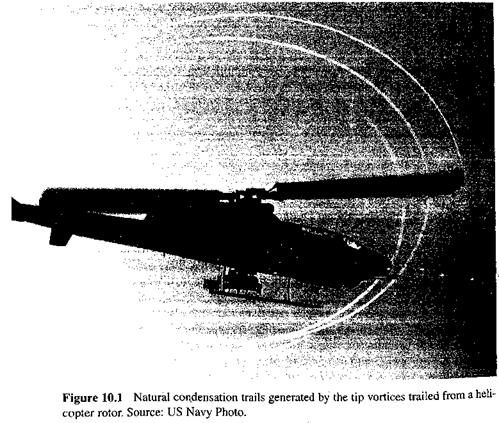Natural Condensation Effects
Evidence of the rotor wake can sometimes be seen through natural condensation of water vapor inside the blade tip vortices. Published photographs of the phenomena are relatively rare, but examples are given by Felker et al. (1986), Campbell & Chambers (1994), and McVeigh et al. (1997). Representative examples are shown in Fig. 10. і and Fig. 10.2, with another being shown previously in Fig. 2.2. The results obtained often appear similar to smoke flow visualization, exhibiting characteristic tubular trails with large central voids marking the positions of the vortices. These voids are caused by centripetal accelerations
|
|
|
Figure 10.2 Natural condensation trails in the tip vortices generated by a tilt-rotor aircraft. Source: Courtesy of US Navy, Patuxent Naval Air Station. |
on the vapor particles as well as by the thermodynamic aspects of the problem. Although condensation flow visualization has been achieved in a wind tunnel environment [Dadone
(1970) ] it is usually only outdoors that the correct combination of atmospheric conditions exist, that is, when the air temperature and dew point spread are small. Even then, however, a challenge is to have the right lighting conditions and background contrast to allow a good photographic exposure.













